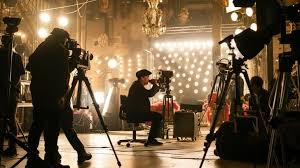The Timeless Masterpiece: A Reflection on The Shawshank Redemption
Few films in cinematic history have captured the human spirit quite like The Shawshank Redemption. Released in 1994 and directed by Frank Darabont, this adaptation of Stephen King's novella Rita Hayworth and Shawshank Redemption has become a timeless classic. With its profound narrative, stellar performances, and poignant themes, the movie continues to resonate with audiences worldwide.
A Story of Hope and Resilience
At its core, The Shawshank Redemption is a story about hope, resilience, and the human capacity for perseverance in the face of adversity. The film follows Andy Dufresne (Tim Robbins), a banker wrongfully convicted of murdering his wife and her lover. Sentenced to life in Shawshank State Penitentiary, Andy endures the harsh realities of prison life while maintaining a sense of quiet dignity.
Through his friendship with Ellis "Red" Redding (Morgan Freeman), the prison's veteran inmate and narrator, Andy finds a purpose beyond mere survival. From building a library to helping fellow inmates with financial advice, Andy uses his skills and intelligence to create a semblance of hope within the bleak confines of Shawshank.
Key ThemesHope as a Driving Force
One of the film's most iconic lines, "Hope is a good thing, maybe the best of things, and no good thing ever dies," encapsulates the central theme. Andy's unrelenting hope contrasts with Red's initial skepticism about its value. Over time, Andy's belief in hope transforms not only his own life but also those around him.Friendship and Human Connection
The bond between Andy and Red is the heart of the film. Their friendship highlights the importance of companionship, trust, and mutual support in overcoming life's challenges.Freedom and Redemption
Though set within the oppressive confines of a prison, the film constantly alludes to the idea of freedom—not just physical freedom, but the mental and emotional liberation that comes from holding onto hope and purpose. Andy's ultimate escape symbolizes the triumph of the human spirit over seemingly insurmountable odds.
Performances That Leave a Mark
Tim Robbins delivers a subtle yet powerful performance as Andy, portraying him as a man of quiet strength and determination. Morgan Freeman's portrayal of Red is equally mesmerizing, with his warm, reflective narration guiding viewers through the story. Freeman's voiceover adds a layer of depth, making the audience feel as if they are hearing an intimate recounting of a deeply personal tale.
Cinematography and Score
The cinematography by Roger Deakins captures the stark, oppressive atmosphere of Shawshank prison while also showcasing moments of beauty and liberation. Whether it's the powerful scene of inmates listening to an opera over the prison's loudspeakers or the climactic rain-soaked escape, each frame is visually impactful.
Thomas Newman's hauntingly beautiful score enhances the emotional weight of the film. The music complements the narrative perfectly, drawing viewers deeper into the story's emotional highs and lows.
Why The Shawshank Redemption Remains a Classic
Despite receiving only modest attention during its initial theatrical release, The Shawshank Redemption gained widespread acclaim over time, becoming one of the highest-rated films on IMDb. Its universal themes of hope, resilience, and redemption transcend cultural and generational boundaries, making it a movie that resonates with audiences of all backgrounds.
The film's enduring legacy lies in its ability to inspire. It reminds us that even in the darkest of times, the human spirit can endure, overcome, and ultimately triumph.



















